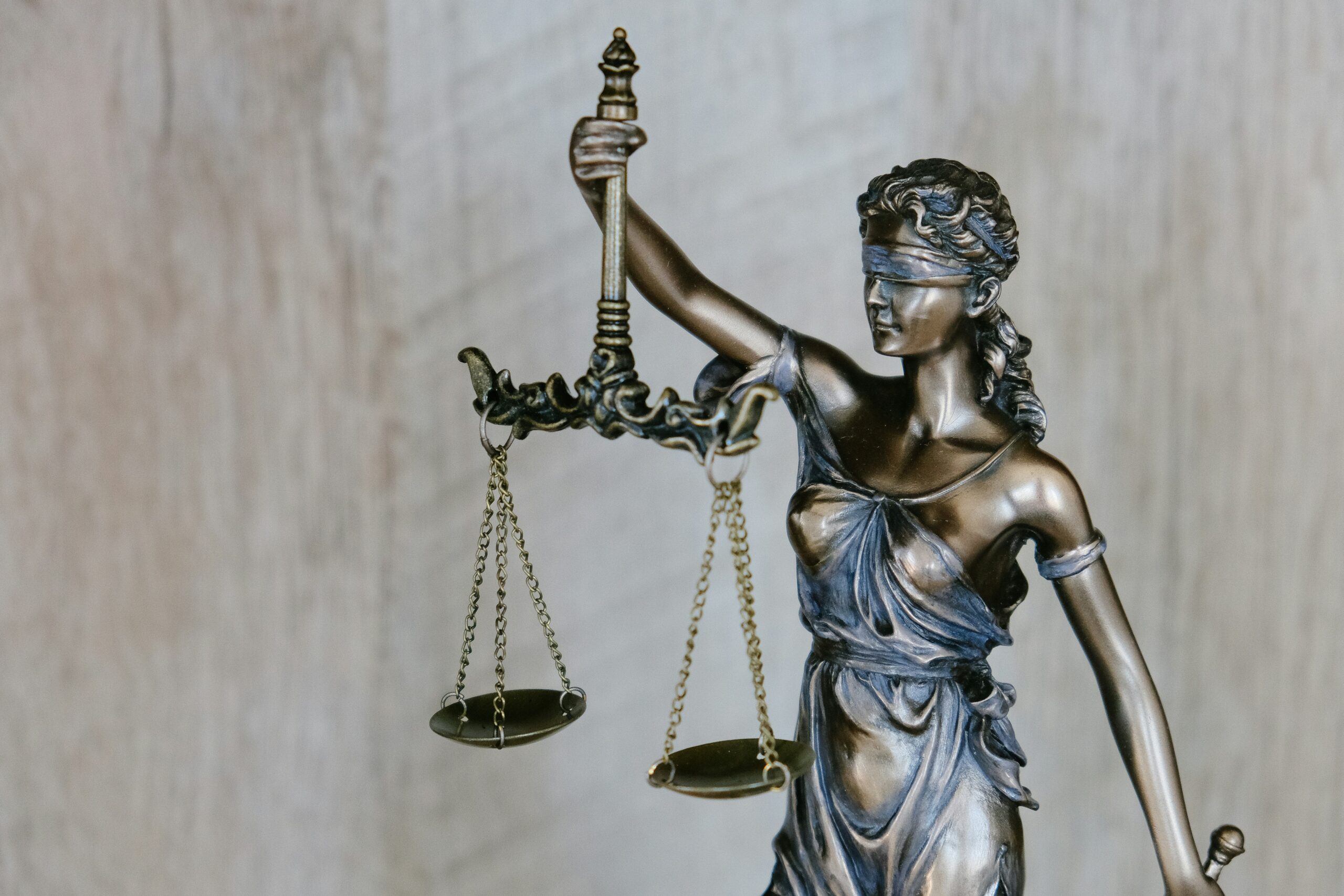Balancing Justice: Analyzing Historical and Future Implications of Capital Punishment
Share

Image Credits: @tingeyinjurylawfirm on Unsplash (Unsplash License)
There are few practices in the history of the United States legal system that have ignited as much moral, political, and constitutional debate as the practice of capital punishment. Defined by the Department of Justice as “the process of sentencing convicted offenders to death for the most serious crimes, the death penalty embodies a complex intersection of justice, ethics, and human rights. As state and federal governments implement the practice into their legal systems, the constitutionality of capital punishment became an issue in other branches of government, specifically the United States Supreme Court. As our nation continues to witness legislative activity that blurs the boundaries of imposing the death penalty upon society’s most dangerous criminals, it is imperative to analyze the involvement of the Supreme Court in determining the constitutionality of capital punishment in order to evaluate the future of the death penalty in the United States
The Eighth Amendment
The Eighth Amendment to the United States Constitution prohibits the government from imposing unreasonably harsh punishments upon criminal defendants, barring excessive fines and the infliction of cruel and unusual punishment. While originally intended to prohibit the use of physical torture and barbaric punishments, the Court’s decision in Weems v. United States (1910) sought to expand the interpretation of the Constitution’s ‘cruel and unusual language’ to cases involving excessive punishment disproportionate to the offense.
Historical Supreme Court Rulings on Capital Punishment
Since its expansion, the principles of the Eighth Amendment have served as the legal foundation for petitioners to bring the debate over capital punishment before the Supreme Court of the United States. Before the 1970s, death penalty cases were permitted under the presumption of their legality under the Fifth, Eighth, and Fourteenth Amendments. In 1972, however, the Supreme Court heard its first blatant question of the constitutionality of capital punishment; in a 5-4 decision, Furman v. Georgia became the first declaration that the arbitrary practices of capital punishment in Georgia violate the Eighth and Fourteenth Amendments.
The holding of this case was not equivalent to a complete elimination of the penalty, despite the opinions of various Justices. States analyzed the specific practices deemed unconstitutional by the Court in order to shape new guidelines on capital punishment that would not contradict the precedent case, but allow states to continue the practices. These constitutional loopholes were upheld in a plethora of cases that addressed different states’ practices; most notably, the Court’s decision in Gregg v. Georgia (1976) upheld the guidelines that regulated the punitive actions of the state and declared capital punishment as constitutional under the Eighth Amendment. In addition to allowing governments to implement capital punishment into their justice systems, the holding in Gregg outlined specific procedural requirements to preemptively eliminate abusive practices, including the bifurcation of trials for capital offenses and proportionality reviews to address sentencing disparities.
The Supreme Court’s contrasting decisions ignited an ideological debate on the morality of the death penalty, resulting in a slew of cases that expanded the applicability of the death penalty in some aspects while simultaneously limiting the methods and guidelines state governments may implement. This strain is evident in the 2002 decision Atkins v. Virginia, where the Court ruled that the imposition of the death penalty on mentally disabled or incapacitated defendants is unconstitutional. The Court’s next term provided a ruling in Ewing v. California (2003), finding nothing in the Eighth Amendment that stops a government from imposing the death penalty on non-murderous, but repeat violent offenders.
Political Implications of Supreme Court Rulings
The trend of contradictory opinions on the issue of capital punishment has persisted through today’s Supreme Court. The current bench, affected by the passing of Justice Ruth Bader Ginsburg and opening of various seats, hosts a conservative majority with only three presiding liberal Justices. Their approach currently focuses on strengthening the death penalty, making the process of appeals more difficult for death row inmates and allowing state governments to impose capital punishment more freely. Recent legislation that reflects this trend is the proposal to add a firing squad as a method of execution in Idaho and Tennessee, and bills to impose the death penalty for non-murderous offenses in states including Arkansas and Iowa. These new pieces of legislation are made possible because of a 2019 decision by the Supreme Court in Bucklew v. Precythe, where Justice Gorsuch wrote that the ban on cruel and unusual punishment does not guarantee a defendant a painless death. This explains why over 300 executions are reported to cause unnecessary agony or are ‘botched’ by executioners. Examples of botched executions include an inmate catching on fire during electrocution, being strangled during hangings, and being administered the wrong dosage of lethal injections – all of which may be considered cruel and unusual punishment.
The most striking attempts to strengthen capital punishment have originated from the Florida legislature. This rapid shift in legislative action to loosen death penalty regulations came swiftly after the trial of Nikolas Cruz, who shot and killed 17 people at Marjory Stoneman Douglas High School on Valentine’s Day of 2018. The issue before the jury did not determine Cruz’s guilt or innocence in the act, but instead questioned whether he should receive the death penalty or a lesser sentence. The verdict, sparing Cruz from capital punishment in sentencing him to life without parole, sparked an uproar from families of the victims and gun rights activists throughout the state of Florida.
The decision was based on the lack of unanimity among the jurors in finding that the aggravating factors of the case outweighed the factors that protected Cruz from capital punishment; the presiding judge throughout the trial was also prohibited from overriding the verdict due to precedent set in Hurst v. Florida. Family members like Tony Montalto, father of 14-year-old Gina Montalto who was murdered in the shooting, felt a loss of faith in the legal system. As a result, people who disagreed with the verdict in the trial demonstrated support for SB 450, a bill that would only require eight out of twelve jurors to vote for the death penalty in order for it to be imposed. While this change seemed crucial for affected family members like Montalto, who felt that this law was the only way for the justice system to protect victims and their loved ones, many opposers fear that the new legislation is a rash response to a tragic case for the sole purpose of loosening restrictions on the death penalty. HB 1297 was also introduced to the state’s legislature after the verdict in Cruz’s trial, allowing capital punishment for sexual battery cases and preventing a judge from lessening the sentence from death to life in prison. Both bills attempting to give the government more avenues to impose the death penalty on defendants were signed into law by Governor DeSantis and went into effect just a few months ago. The passage of this legislation calls into question the ability of state governments to eliminate restrictions on punitive measures for capital crimes, and foreshadows a rise of constitutional debate on whether the new legislation in Florida pushes the boundaries of the Eighth Amendment.
The Future of Capital Punishment
The impact of the Supreme Court’s ambiguity on the constitutionality of capital punishment is evident in the starkly contrasting methods of punishment throughout the country. Maria DeLiberato, executive director of Floridians for Alternatives to the Death Penalty, notes the decision from Governor DeSantis to sign the aforementioned SB 450 as “constitutionally questionable”, declaring that governments “should not be making important legislative decisions based on one case”. While the state of Florida continues to strengthen its power in imposing the death penalty, the general trends of the country predict a stronger disapproval of the Florida laws. Viewing an 85% decrease in the use of the death penalty throughout the nation, the downward trend in the implementation of capital punishment suggests that future decisions on the constitutionality of recent legislation may reflect the trend of the country. As the Supreme Court rules on a series of cases that distinctly outline the constitutionality of intense debate topics throughout society, and as state governments continue to support laws that fail to protect the rights and lives of incarcerated individuals, the future of capital punishment rests in the hands of the Supreme Court. In evaluating the lasting implications of historical rulings on the relation between capital punishment and the Eighth Amendment, it is clear that a firm decision by the Court might just be the only way to keep all systems of government on the same side of the debate.


Want to get involved?
Connect with us! Connect with us!